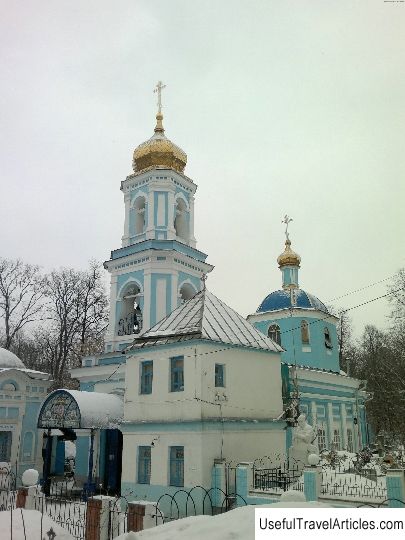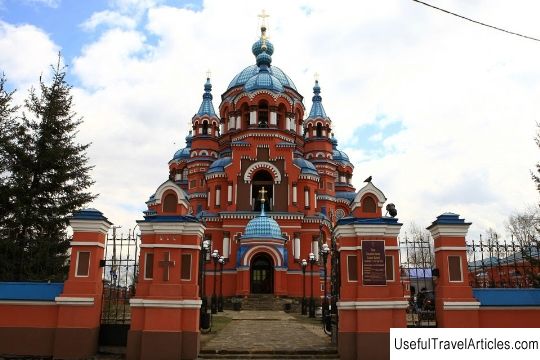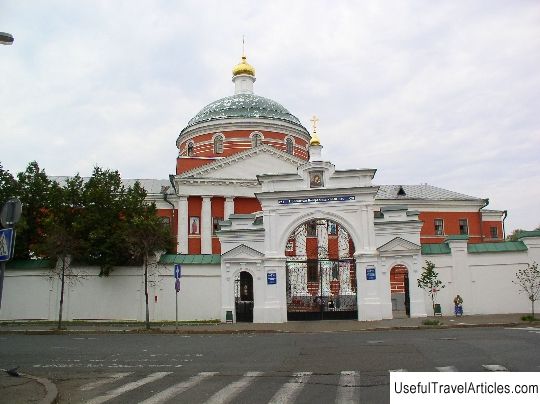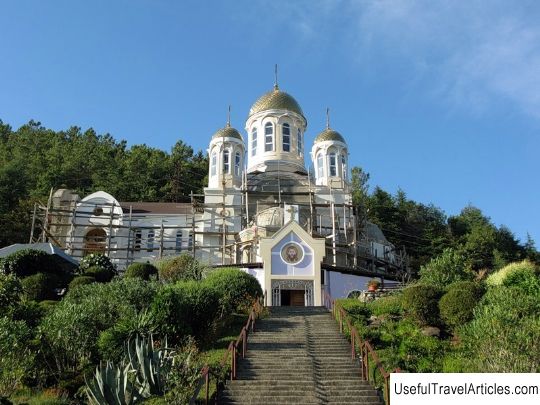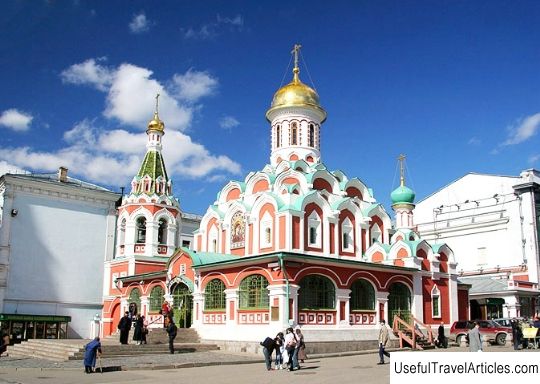Church of the Kazan Icon of the Mother of God description and photo - Russia - Central district: Rybinsk
Rating: 8,2/10 (294 votes) 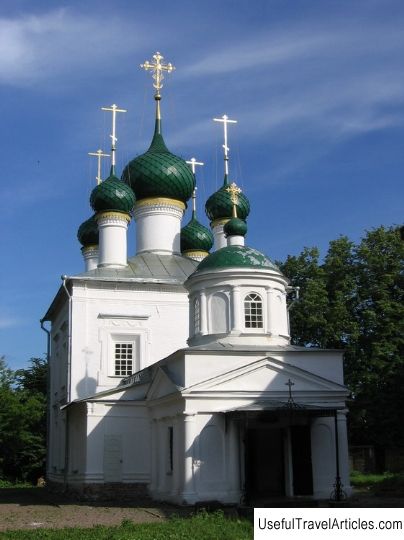
Church of the Kazan Icon of the Mother of God description and photo - Russia - Central District: Rybinsk. Detailed information about the attraction. Description, photos and a map showing the nearest significant objects. Photo and descriptionThe Church of the Kazan Icon of the Mother of God stands in Rybinsk at the mouth of the Cheryomukha River, on its left bank. This is one of the few buildings that make up the ensemble of the Kazan parish, which has survived to this day. The first mention of this church dates back to 1674-1676. In 1697 the Kazan temple was consecrated. Most likely, craftsmen from Yaroslavl were invited to build the temple, since typologically it is part of a series of Yaroslavl temples of the late 17th century, such as the Church of St. Nicholas Rubleny Gorod, the Church of St. Nicholas of Pensky, the Church of the Annunciation and others. The Kazan churches were rather modestly decorated with curb-shaped cornices located between the roller and the shelves, and the shoulder blades that crowned the quadruple, the altar, the refectory, separating the basement. The window openings were arched without decorations. In the lower tier, a pair of windows were moved away from the vertical axes of window openings on the second floor, which gave a certain dynamics to the composition of the facades and emphasized the tendency towards the center of the pyramid of the five domes. In 1767-1768. the first works were performed on the temple, which led to a change in its appearance. Presumably, this was done due to the visit of Empress Catherine II to Rybinsk in 1767. The interior of the temple was painted by 12 Yaroslavl merchant masters. In addition to the painting, a new wooden iconostasis of the classical order was made, which replaced the old baroque one. All facades were plastered and painted with ocher, highlighting the details in white. In 1797, roofing work was carried out - the wooden rafters were replaced with metal ones, the roof slope was increased. As a result, the lower decorative roll of the drums was closed, which changed the proportions of the drums. In 1813-1822. a new four-storey bell tower with a high spire with a cross was built. To achieve stylistic unity, the tent-roofed bell tower was first dismantled. A porch with a rotunda was built in its place, then the Vvedenskaya church was rebuilt. In 1829, the old Vvedensky temple was dismantled, and in its place was built in 1830-1831. built a new warm one, which was consecrated in 1832. In 1831-1832. these both churches of the Kazan parish were surrounded by a fence with iron bars and stone pillars. In 1834, a new iconostasis was gilded in the Vvedenskaya church, and the Yaroslavl bourgeoisie Starkov, Lotoshilov, and Telegin performed painting with ceiling glue technique. In 1854, a two-storey sacristy was built for the Kazan parish, and on the bell tower the floors and wooden walkways were altered. In the 1860s. a one-story gatehouse was built from the south of the Vvedenskaya Church. In the 1930s. churches of the Kazan parish were closed. The bell tower and fence were dismantled. The warm Vvedenskaya church was partially destroyed. Later it was reconstructed into a residential building. At the Kazan Church, the drums were demolished and the iconostasis was dismantled. In the period from 1940 to 1980. the building of the Kazan Church housed the city archive. In 1986, work began on the preservation of the building. In 1990, restoration work was completed. In 1991 the church was transferred to the Yaroslavl Diocese, today services are held here. The frescoes of 1767-1768 have been well preserved in the interior of the Kazan Church to this day. Yaroslavl masters were involved in their creation: Ivan Sarafannikov, Fedor Pototuev, Mikhail Soplyakov with his son Yefim, Vasily Kuretskov, Stefan Stolyarov, Ivan Gorin with his son Fedor and others. Levkas works were performed by Alexey Shchekin. In a rather small space of the central quadrangle, there are 142 story hallmarks. The sails of the vault of the temple are divided into 4 parts by cutouts. The eastern sail is occupied by the solemn composition "The Crowning of Our Lady". The lower part of the vault is surrounded by a narrow frieze of 12 medallions, which illustrate the Creed. The walls are divided into 6 tiers with cinnabar cut-outs. Subject hallmarks are located here with a continuous ribbon. In the upper tiers, the earthly life of Christ is depicted in detail. In the third tier, the gospel cycle is supplemented with illustrations on the theme of the Lord's Prayer. The fourth tier is "The Passion of Christ", the fifth is "The Legend of Our Lady of Kazan" quot;. The sixth tier consists of a grass frieze and a traditional raspberry pad. The low space of the three-apse altar, undivided inside, is almost unconnected with the interior of the main temple and is separated from it by three arched openings. Kazan murals are made in a rather rich, bright color scheme with a predominance of golden, cherry, raspberry, olive, white, pinkish, cinnabar tones. Partial restoration of the ancient painting was carried out under the leadership of V.I. Vasin.   We also recommend reading Intercession Church of the Spassky Monastery description and photos - Russia - Golden Ring: Murom Topic: Church of the Kazan Icon of the Mother of God description and photo - Russia - Central district: Rybinsk. |
